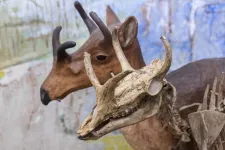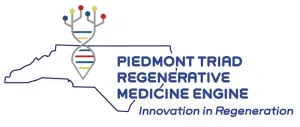(Press-News.org) When it comes to diatoms that live in the ocean, new research suggests that photosynthesis is not the only strategy for accumulating carbon. Instead, these single-celled plankton are also building biomass by feeding directly on organic carbon in wide swaths of the ocean. These new findings could lead researchers to reduce their estimate of how much carbon dioxide diatoms pull out of the air via photosynthesis, which in turn, could alter our understanding of the global carbon cycle, which is especially relevant given the changing climate.
This research is led by bioengineers, bioinformatics experts and other genomics researchers at the University of California San Diego. The new findings are published in Science Advances on July 17, 2024.
The team showed that the diatom Cylindrotheca closterium, which is found in oceans around the world, regularly performs a simultaneous mix of both photosynthesis and direct eating of carbon from organic sources such as plankton. In more than 70% of the water samples the researchers analyzed from oceans around the world, the team found signs of simultaneous photosynthesis and direct organic carbon consumption from Cylindrotheca closterium.
The team also showed that this diatom species can grow much faster when consuming organic carbon in addition to photosynthesis.
Furthermore, the new research hints at the tantalizing possibility that specific species of bacteria are feeding organic carbon directly to a large percentage of these diatoms living all across the global ocean.
This work is based on a genome-scale metabolic modeling approach that the team used to unravel the metabolism of the diatom Cylindrotheca closterium. The researchers constrained their genome-scale metabolic model with global gene expression data obtained from the TARA ocean expedition. The researchers believe this is the first time genome-scale models have been used at a global scale.
The team’s new metabolic modeling data support recent lab experiments suggesting that some diatoms may rely on strategies other than photosynthesis to intake the carbon they need to survive, thrive and build biomass.
The UC San Diego led team is in the process of expanding the scope of the project to determine how widespread this non-photosynthetic activity is among other diatom species.
Are ocean bacteria feeding diatoms?
When the team looked at the physical and chemical parameters measured in their ocean water samples – including temperature, pH, salinity, light, nitrogen and carbon availability – they did not find any correlation between those parameters and a tendency by the diatoms to steer away from photosynthesis-only strategies.
However, the team found a clear signal when exploring specific bacterial populations co-existing with the diatom Cylindrotheca closterium in the ocean water samples. This finding hints at bacteria-diatom interactions that drive the simultaneous mix of photosynthesis and direct consumption of organic carbon – a phenomenon known as “mixotrophy.”
The team believes that specific bacteria may be feeding the diatoms directly, helping these diatoms to be one of the most successful and important microbes on the planet, in terms of oxygen production, carbon sequestration, and as a foundation of food webs that support nearly all life in the ocean.
“Diatoms are major contributors to marine food chains and key drivers of the global carbon cycle. Previously, we have estimated all carbon cycling models on the assumption that the only role that diatoms play is in carbon dioxide fixation. Our findings demonstrate that this is not the case, but that diatoms simultaneously also eat organic carbon. In other words, we have shown that diatoms do not rely exclusively on carbon dioxide fixation for their growth and biomass production. We believe these results will have major implications for our understanding of global carbon cycling,” said UC San Diego Professor Karsten Zengler, professor in the Departments of Pediatrics and Bioengineering and researcher in the Center for Microbiome Innovation at the Jacobs School of Engineering.
“While there have been curious observations in the laboratory regarding diatoms deviating from photosynthesis, it has been impossible to test what kind of metabolism these diatoms perform in the ocean – until now. This is because there are many, many genes involved in this process, and it's very difficult to delineate what process is active from gene expression data alone. Our approach gets around this challenge.”
The research team hopes this work will stimulate interest in taking a much closer look at our understanding of the global carbon cycle, taking into consideration this new broader understanding of how ocean diatoms get their carbon.
What the bacteria feeding the diatoms may be getting out of the relationship is another question for further research.
The paper "Mixotrophic growth of a ubiquitous marine diatom" by Kumar et al appears in Science Advances.
Complete author and funding information are listed in the paper.
The corresponding author is UC San Diego Professor Karsten Zengler. He holds faculty appointments in the Department of Pediatrics at the UC San Diego School of Medicine; and the Shu Chien-Gene Lay Department of Bioengineering at the UC San Diego Jacobs School of Engineering. He is a faculty member of the Center for Microbiome Innovation at the UC San Diego Jacobs School of Engineering and Affiliate Faculty in the Program in Materials Science and Engineering.
END
Diatom surprise could rewrite the global carbon cycle
2024-07-17
ELSE PRESS RELEASES FROM THIS DATE:
Microbes found to destroy certain ‘forever chemicals’
2024-07-17
UC Riverside environmental engineering team has discovered specific bacterial species that can destroy certain kinds of “forever chemicals,” a step further toward low-cost treatments of contaminated drinking water sources.
The microorganisms belong to the genus Acetobacterium and they are commonly found in wastewater environments throughout the world.
Forever chemicals, also known as per- and polyfluoroalkyl substances or PFAS, are so named because they have stubbornly strong carbon-fluorine chemical bonds, which make them persistent in the environment.
The microorganisms discovered by UCR scientists and their collaborators ...
When the brain speaks, the heart feels it
2024-07-17
Research by the Technion has demonstrated that activation of the brain’s reward system could boost recovery from a heart attack. The research, which was conducted at the Ruth and Bruce Rappaport Faculty of Medicine, was led by Ph.D. student Hedva Haykin under the supervision of Prof. Asya Rolls and Prof. Lior Gepstein.
The Technion research group focused on the reward system, a brain network activated in positive emotional states and motivation and evaluated its potential in improving recovery ...
Llama nanobodies: A breakthrough in building HIV immunity
2024-07-17
ATLANTA — A research team at Georgia State University has developed tiny, potent molecules that are capable of targeting hidden strains of HIV. The source? Antibody genes from llama DNA.
The research, led by Assistant Professor of Biology Jianliang Xu, uses llama-derived nanobodies to broadly neutralize numerous strains of HIV-1, the most common form of the virus. A new study from this team has been published in the journal Advanced Science.
“This virus has evolved a way to escape our immune system. Conventional antibodies are bulky, so it’s difficult for them to find and attack the virus’ surface,” ...
How our brains learn new athletic skills fast
2024-07-17
You join a swing dance class, and at first you’re all left feet. But – slowly, eyes glued to the teacher – you pick up a step or two and start to feel the rhythm of the big band beat. A good start.
Then you look over and realize the couple next to you has picked up twice the steps in half the time.
Why?
According to a new study from University of Florida biomechanical researchers, the quick, athletic learners among us really are built differently – inside their brains.
That’s what UF Professor of Biomedical Engineering Daniel Ferris, Ph.D., and his former doctoral student, Noelle Jacobsen, Ph.D., discovered when they studied how people learn ...
New Durham University study shows promising diagnosis of Multiple Sclerosis from images of the eye
2024-07-17
-With images-
Researchers at Durham University, UK and Isfahan University of Medical Sciences, Iran have developed an innovative approach to diagnosing Multiple Sclerosis using advanced eye imaging techniques.
This groundbreaking method could revolutionise how Multiple Sclerosis is detected, offering a faster, less invasive, and more accessible alternative to current diagnostic procedures.
The study, led by Dr Raheleh Kafieh of Durham University, integrates two types of eye scans: optical coherence tomography (OCT) and infrared scanning laser ophthalmoscopy (IR-SLO).
By training computer models ...
New training program facilitates home-based transcranial electrical stimulation
2024-07-17
Traveling to and from a clinic or a laboratory for treatment can be difficult and expensive for older Americans. To address this, scientists developed and tested a new training and supervision program for older adults so they can receive Transcranial Electrical Stimulation (tES), a promising intervention for various clinical conditions, in their homes.
Published in Neuromodulation: Technology at the Neural Interface, this groundbreaking training and supervision program was designed to introduce and teach caregivers, family members, and patients how to administer home-based transcranial electrical stimulation (HB-tES), equipping them ...
Study finds persistent proteins may influence metabolomics results
2024-07-17
GRAND RAPIDS, Mich. (July 17, 2024) — Van Andel Institute scientists have identified more than 1,000 previously undetected proteins in common metabolite samples, which persist despite extraction methods designed to weed them out.
The findings, published in Nature Communications, give scientists new insights and tools for improving future metabolomics experiments, including a novel protocol for removing these proteins during the extraction process. The study does not invalidate prior results but instead reinforces the importance ...
Living in greener neighborhoods during midlife can slow cognitive decline
2024-07-17
A new study found that increased exposure to residential greenery may help stave off cognitive decline by an annual rate of eight months. This delay was observed more among people living in low-socioeconomic status and highly populated neighborhoods, as well as people who carry the APOE-ɛ4 gene, which is associated with an increased risk of Alzheimer’s disease.
Research has shown that about 40 percent of dementia could be prevented or delayed worldwide by addressing modifiable risk factors associated with the condition, particularly during midlife.
A new study led by a Boston University School of Public Health (BUSPH) ...
Research tracks 66 million years of mammalian diversity
2024-07-17
When trying to understand the present, it's helpful to look to history. New research from the University of Nebraska–Lincoln examined the fossil record going back 66 million years and tracked changes to mammalian ecosystems and species diversity on the North American continent.
The study, led by Alex Shupinski, who earned her doctorate in May, and co-authored by Kate Lyons, associate professor in the School of Biological Sciences, provides a large-scale view of how species diversity changed over the first 65 million years of the Cenozoic era — up until the arrival of humans — ...
RegeneratOR Test Bed welcomes Cytoink to accelerate biomedical innovations
2024-07-17
Winston-Salem, North Carolina — July 17, 2024 — The RegeneratOR Test Bed, located in Innovation Quarter, announces the inclusion of Cytoink into its pioneering ecosystem dedicated to advancing biomedical research and development. Cytoink brings cutting-edge biomaterials manufacturing, with over 100 custom formulations, and bioprinting expertise that merges biofunctionality with high-throughput production. Cytoink specializes in the biofabrication of in vitro 3D tissue phantoms, extrusion-based and light-based (DLP/VAM) bioinks, and integrated perfusion microfluidics bioreactors. Additionally, Cytoink provides bespoke biomaterial solutions ...


